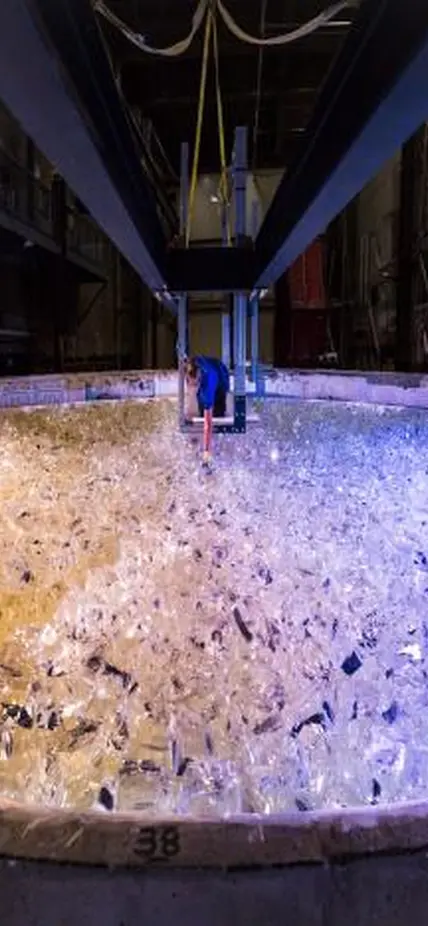Washington, DC—This week the Giant Magellan Telescope project began the four-year process of fabricating and polishing its final primary mirror. It will be one of a suite of seven 8.4-meter mirrors that will make up the telescope’s 386-square-meter light-collecting surface and enable humanity to unlock the secrets of the cosmos.
Currently being built at Carnegie Science’s Las Campanas Observatory in Chile, the Giant Magellan will be the first in the new class of extremely large telescopes to finish its primary mirror array. When completed, the telescope will enable breakthrough astronomy—from revealing the fundamental physics underpinning the universe to advancing our ability to search for life on other planets.
“The combination of light-gathering power, efficiency, and image resolution will enable us to make new discoveries across all fields of astronomy,” explained Carnegie Science astronomer Rebecca Bernstein, who is also Chief Scientist for the Giant Magellan project. “We will have a unique combination of capabilities for studying planets at high spatial and spectral resolution, both of which are key to determining if a planet has a rocky composition like our Earth, if it contains liquid water, and if its atmosphere contains the right combination of molecules to indicate the presence of life.”
The idea for the Giant Magellan was born nearly two decades ago at the Carnegie Observatories and the institution has played a crucial role in the project’s development since it originated. As a founding partner, Carnegie Science has helped pave the way for the Giant Magellan Telescope Organization’s successful expansion and Carnegie researchers have made major contributions to the telescope’s technical and scientific capabilities.
In late 2021, the National Academies of Science, Engineering, and Medicine ranked the Giant Magellan—as part of the U.S. Extremely Large Telescope program—as a top strategic priority, recommending an injection of federal support to complete its construction and bring about a new era in astronomy.
“This project is absolutely critical for maintaining U.S. leadership in astronomy and astrophysics,” said Carnegie Science President Eric D. Isaacs. “Every construction milestone brings us closer to first light and the science that will transform our understanding of the earliest galaxies, unravel the mysteries of dark matter, and inform the search for life on distant worlds.”
In the project’s latest development, the Richard F. Caris Mirror Lab at another founding project partner, the University of Arizona, closed the lid on nearly 20 tons of the purest optical glass inside a one-of-a-kind oven housed beneath the stands of the university’s football stadium. The spinning oven will heat the glass to 1,165 degrees Celsius, so that as it melts, it is forced outward to form the mirror’s curved paraboloid surface. Measuring 8.4-meters in diameter—about two stories tall when standing on edge—the mirror will cool over the next three months before moving into the polishing stage.
Once assembled, all seven mirrors will work in concert as one monolithic 25.4-meter mirror—a diameter equal to the length of a full-grown blue whale—resulting in up to 200 times the sensitivity and four times the image resolution of today’s most advanced space telescopes.
With strong operational infrastructure already in place at Las Campanas, manufacturing is now taking place on the telescope’s critical subsystem before starting on the enclosure.
“We are in an important stage of fabrication, with much of the manufacturing happening in the United States,” shared Giant Magellan Telescope President Robert Shelton.
The 39-meter-tall telescope structure is being made with 2,100 tons of American steel at a newly-built manufacturing facility in Rockford, Illinois, and fabrication of the telescope’s first of seven adaptive secondary mirrors—a one for one pair with each of the seven primary mirrors—is underway.
When finished, the Giant Magellan will be the largest public-private funded science project in history. This extraordinary effort will be made possible by significant investment from the United States government, visionary philanthropists, and an international consortium of 13 leading universities and research institutions representing the U.S. and five other countries—including founding partner Carnegie Science, along with Arizona State University, Harvard University, Smithsonian Institution, Texas A&M University, The University of Texas at Austin, University of Arizona, University of Chicago.
